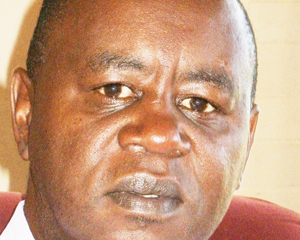
ZIMBABWE and Rwanda are the only two countries in the Common Market of Eastern and Southern Africa (Comesa) bloc that have registered negative inflation.
BY VICTORIA MTOMBA
Zimbabwe’s inflation figure as of June 2015 stood at -2,8% while Rwanda’s inflation figure was -2,7%.
The year-on-year inflation rate in the Comesa region as measured by the Harmonised Consumer Price Index (HCPI) stood at 9,2% for the month of June 2015, down from 10,9% registered in May 2015.
Burundi recorded inflation of 8,9%, Democratic Republic of Congo (0,6%), Egypt (10,8%), Ethiopia (12,2%), Kenya (1,9%), Madagascar (7,8%), Malawi (23,5%), Mauritius (0%), Seychelles (5,5%) and Sudan (21,9%). Swaziland’s annual inflation was 5,3%, Uganda (5,4%) and Zambia (7%).
Economist Vince Musewe said Zimbabwe was facing a liquidity crunch and there was not enough money in the economy, while goods in the country were overpriced. Musewe said Rwanda was a landlocked country and it cost more to deliver goods in Rwanda than Angola. “Zimbabwean goods take months to be delivered and the cost for the delivery of goods is high. There must be an adjustment of prices,” he said.
Zimbabwe has seen most companies closing down and thousands of people losing their jobs. This has resulted in the decline in aggregate demand as the middle class that should drive the economy is no longer there. Over 70% of the economy is in the informal sector and this has seen taxes that feed government coffers dwindling.
The rate stood at 13,0% during the same period in 2014. The month-on-month inflation rate in the Comesa as measured by HCPI stood at -0,1% for the month of June 2015, down from 0,8% registered in May 2015. It was 1,5% in June in 2014.
- Chamisa under fire over US$120K donation
- Mavhunga puts DeMbare into Chibuku quarterfinals
- Pension funds bet on Cabora Bassa oilfields
- Councils defy govt fire tender directive
Keep Reading
The HCPI consists of food and non-alcoholic beverages (9,6%), alcoholic beverages and tobacco (24,6%), clothing and footwear (7,9%), housing, water, electricity, gas and other fuels (8,7%), furnishings, household equipment and routine household maintenance (2,8%), health (1,3%), transport (4,9%), communication (2,7%), recreation and culture (18,7%), education (19,6%), restaurants and hotels (12,9%) with miscellaneous goods and services accounting for 2,7%.











